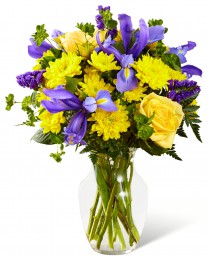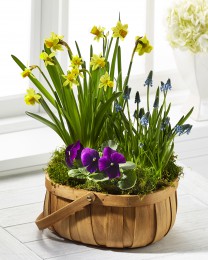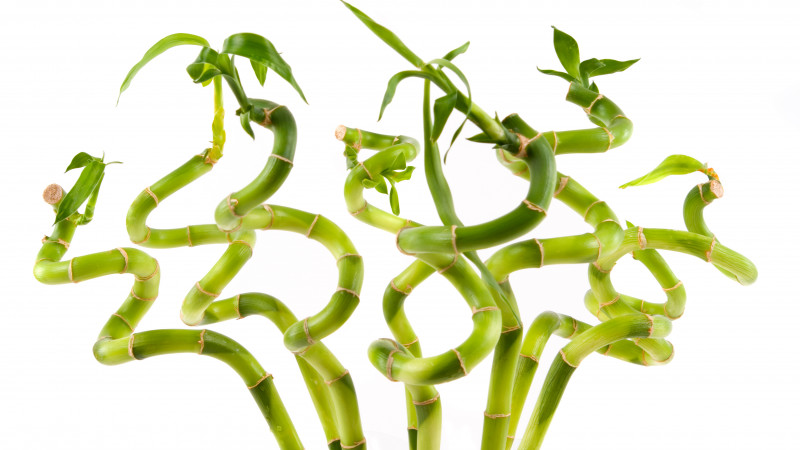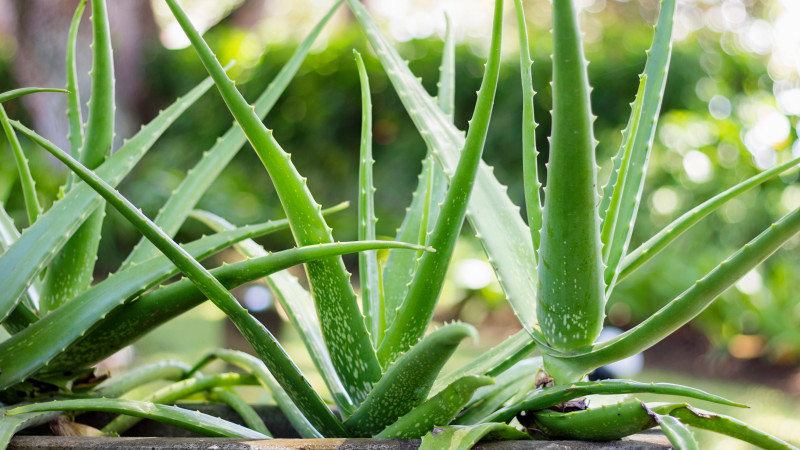Muscari
These spring flowers are very common for Eurasia and create an informal yet unique landscape of your garden. They do not require special care for maintenance, except for moist and well-draining soil and which is probably their biggest advantage - they bloom reliably year after year, reaching a height of 6-8 in. Their colors are mostly light blue in color, with a white edge, but variations can also be found. Their leaves dry out after flowering, but resume in the fall. This makes them ideal for planting as a perennial border among other flowers for the garden.
Furthermore, the seeds of muscari are planted in the soil to a depth of 2-3 in. They require a warm and sunny to semi-shady place in the garden. They need to be transplanted every 5 - 6 years. The blooming period is from March to May. And If you have started wondering what you can place next to this blue fragrant blanket in the garden, here is the answer - tulips and daffodils are among the most appropriate neighbors.
Blue crocus
These spring flowers come in stunning purple, gorgeous yellow or pure white to suit the mood of your spring garden. They are among the earliest flowers for the garden and seem to illuminate the pale yard in late winter and early spring with cheerful hues. Planting them is easy and if you plant a lot of tubers in the fall, just watch how without any care these plants multiply over the years.
Crocuses are cold-loving flowers, so it is good to plant them under shrubs or trees. This way, even when the weather is warmer, they will be in the shade. In addition, if you want to enjoy crocuses longer, provide them with moist and permeable soil. This will definitely increase the chance to bloom again next year.
Keep in mind that crocuses cannot fight against lush vegetation and can be quickly taken over from lawns. In addition, if you want to enjoy your crocuses, you should start mowing your lawn only when their leaves begin to turn yellow. Most often this happens in May.
A curious fact is that ants also spread crocus seeds, so they can also appear in places where you have not planted them. Nevertheless, no matter where in your garden and in what form they appear, crocuses are just one of the harbingers of spring, which must be present in your floral palette.
Tulip
What spring would it be without tulips? Like muscari hyacinths, they can stand on their own or mix well with other spring flowers in the garden. Combine them with late flowering tulips for an even more durable display.
The right time to plant tulips is in the fall, but if for some reason you forgot to do it then, you can plant the bulbs in the spring - in March.
We offer you two options for spring planting of tulips, depending on the time you have.
Option 1 - planting fully ripe bulbs - so you can enjoy blooming tulips this spring, but this option requires some extra effort.
Option 2 - planting bulbs by the traditional method, in which the plants will bloom next year.
Tulips planted in the spring will bloom a little later and not so abundantly compared to plants planted in the fall, but this also has its advantages - you will enjoy the color in the garden bed longer.
Planting the bulbs in the spring is done as early as possible when the weather allows. The best option is to plant the bulbs in containers at the end of winter and transfer them to a permanent place when it warms up.
Hyacinth
Hyacinths, like snowdrops, crocuses and primroses, are a harbinger of spring, when all nature wakes up from its hibernation and everything begins to turn green and saturated with aromas. They are a typical yard flower, but if desired, can be grown on the balcony at home.
Hyacinths are probably some of the most fragrant spring flowers with star-shaped blooms and a popular scent which captures the attention of everyone who steps into your garden. They are found in purple, white, pink and blue and look great both planted alone and in mixed beds among tulips or daffodils. When detached for a fragrant bouquet among the other indoor flowers, they retain their aroma for up to two weeks, which brings their magnificent scent at their owner’s home.
But what is so important to know if you want to plant this showy flower? Being a bulbous plant, hyacinth’s bulbs should be planted in the ground at a depth of about 5 - 6 in and at a distance of 8 in from each other. The place where you will plant the hyacinths should be sunny as they do not like the shade. As for the soil itself, it should be one that does not retain moisture. Watering them is important, but also drainage, because the bulbs can easily rot.
How To Decorate Your Planted Spring Blooms?
Combine The Blooms’ Sizes
There are many ideas for the garden like the inclusion of groups of spring flowers of a certain color, for instance. Small groups of tubers, sheltered among perennials, shrubs, or ornamental stones, create unique accents. Use species with large flowers such as daffodils, tulips and alliums and group several together so that they make a strong visual statement.
Mix The Colors For More Impressive Look
What is more, the right color combination is among the other garden ideas you can use. Bulbous plants look great on their own, but are breathtaking in color combinations. Because choosing combinations that bloom together can be a real challenge, start with pre-packaged bulbs of spring flowers in catalogs or at your local garden center.
Plant Layers
Furthermore, you can create spring bouquets of flowers by planting layers. For example, plant daffodils at a depth of about 6 in, and then muscari at 3 in above them. Hide fallen leaves by mixing spring flower bulbs with those of perennials to help hide fallen leaves on fallen tubers. For example, peonies and geraniums do a great job of covering allium greens, and brunnera is great for hiding daffodil leaves.
Create a Meadow of Fragrant Blooms
Make a meadow with spring flowers. Siberian bluebell, crocus and muscari are spectacular when they bloom in the hundreds in early spring, and they are easy to spread. This makes them ideal for planting in lawns and under trees to create colorful meadows. For a natural look, throw them out of your hand and plant them where they landed.









